Can Underground Buildings Be Beneficial in Hot Regions? An Investigation of Field Measurements in On-Site Built Underground Construction
Abstract
:1. Introduction
2. Literature Review
2.1. Context of Extreme Climate of Al Dwadimi City in Saudi Arabia
2.2. Aim and Objectives of the Study
2.3. Novelty and Significance of the Study
3. Methodology and Materials
3.1. Design and Construction of the Real Model Room Built Underground
3.2. Descriptive of Building Simulation Model
3.3. Use of the Energy Simulation Tool (TAS EDSL)
Calibration of the Energy Model and Its Validation
4. Results and Discussion
5. Conclusions
Author Contributions
Funding
Institutional Review Board Statement
Informed Consent Statement
Acknowledgments
Conflicts of Interest
References
- Alkaff, S.A.; Sim, S.C.; Ervina Efzan, M.N. A review of underground building towards thermal energy efficiency and sustainable development. Renew. Sustain. Energy Rev. 2016, 60, 692–713. [Google Scholar] [CrossRef]
- Porras-Amores, C.; Mazarrón, F.R.; Cañas, I.; Sáez, P.V. Natural ventilation analysis in an underground construction: CFD simulation and experimental validation. Tunn. Undergr. Space Technol. 2019, 90, 162–173. [Google Scholar] [CrossRef]
- Galgaro, A.; Dalla Santa, G.; Cola, S.; Cultrera, M.; De Carli, M.; Conforti, F.; Fauri, M. Underground warehouses for food storage in the Dolomites (eastern Alps—Italy) and energy efficiency. Tunn. Undergr. Space Technol. 2020, 102, 103411. [Google Scholar] [CrossRef]
- Shi, L.; Zhang, H.; Li, Z.; Luo, Z.; Liu, J. Optimizing the thermal performance of building envelopes for energy saving in underground office buildings in various climates of China. Tunn. Undergr. Space Technol. 2018, 77, 26–35. [Google Scholar] [CrossRef]
- Yu, J.; Kang, Y.; Zhai, Z. Advances in research for underground buildings: Energy, thermal comfort and indoor air quality. Energy Build. 2020, 215, 109916. [Google Scholar] [CrossRef]
- Mohammadshahi, S.; Tavakoli, M.R.; Samsam-Khayani, H.; Nili-Ahmadabadi, M.; Kim, K.C. Investigation of naturally ventilated shavadoons component: Architectural underground pattern on ventilation. Tunn. Undergr. Space Technol. 2019, 91, 102990. [Google Scholar] [CrossRef]
- Andolsun, S.; Culp, C.H.; Haberl, J.; Witte, M.J. EnergyPlus vs. DOE-2.1e: The effect of ground-coupling on energy use of a code house with basement in a hot-humid climate. Energy Build. 2011, 43, 1663–1675. [Google Scholar] [CrossRef]
- Casals, M.; Gangolells, M.; Forcada, N.; Macarulla, M.; Giretti, A. A breakdown of energy consumption in an underground station. Energy Build. 2014, 78, 89–97. [Google Scholar] [CrossRef] [Green Version]
- Choi, H.-H.; Cho, H.-N.; Seo, J.W. Risk assessment methodology for underground construction projects. J. Constr. Eng. Manag. 2004, 130, 258–272. [Google Scholar] [CrossRef]
- Working Group 13; ITA. Underground or aboveground? Making the choice for urban mass transit systems. Tunn. Undergr. Space Technol. 2004, 19, 3–28. [Google Scholar] [CrossRef]
- Alaidroos, A.; Krarti, M. Experimental validation of a numerical model for ventilated wall cavity with spray evaporative cooling systems for hot and dry climates. Energy Build. 2016, 131, 207–222. [Google Scholar] [CrossRef]
- Qihu, Q. Present state, problems and development trends of urban underground space in China. Tunn. Undergr. Space Technol. 2016, 55, 280–289. [Google Scholar] [CrossRef]
- Tengborg, P.; Sturk, R. Development of the use of underground space in Sweden. Tunn. Undergr. Space Technol. 2016, 55, 339–341. [Google Scholar] [CrossRef]
- Vähäaho, I. An introduction to the development for urban underground space in Helsinki. Tunn. Undergr. Space Technol. 2016, 55, 324–328. [Google Scholar] [CrossRef]
- Wallace, M.I.; Ng, K.C. Development and application of underground space use in Hong Kong. Tunn. Undergr. Space Technol. 2016, 55, 257–279. [Google Scholar] [CrossRef]
- Zhao, J.; Künzli, O. An introduction to connectivity concept and an example of physical connectivity evaluation for underground space. Tunn. Undergr. Space Technol. 2016, 55, 205–213. [Google Scholar] [CrossRef]
- Nang, E.E.K.; Abuduxike, G.; Posadzki, P.; Divakar, U.; Visvalingam, N.; Nazeha, N.; Car, J. Review of the potential health effects of light and environmental exposures in underground workplaces. Tunn. Undergr. Space Technol. 2019, 84, 201–209. [Google Scholar] [CrossRef]
- Tan, Z.; Roberts, A.C.; Lee, E.H.; Kwok, K.W.; Car, J.; Soh, C.K.; Christopoulos, G. Transitional areas affect perception of workspaces and employee well-being: A study of underground and above-ground workspaces. Build. Environ. 2020, 179, 106840. [Google Scholar] [CrossRef]
- Shan, M.; Hwang, B.G.; Wong, K.S.N. A preliminary investigation of underground residential buildings: Advantages, disadvantages, and critical risks. Tunn. Undergr. Space Technol. 2017, 70, 19–29. [Google Scholar] [CrossRef]
- Roy, R. Earth-Sheltered Houses: How to Build an Affordable Underground Home; New Society Publisher: Gabriola Island, BC, Canada, 2006. [Google Scholar]
- Mazarron, F.R.; Canas, I. Exponential sinusoidal model for predicting temperature inside underground wine cellars from a Spanish region. Energy Build. 2008, 40, 1931–1940. [Google Scholar] [CrossRef]
- Krarti, M. Effect of spatial variation of soil thermal properties on slab-on-ground heat transfer. Build. Environ. 1996, 31, 51–57. [Google Scholar] [CrossRef]
- Li, F.N.; Chen, B.; Xu, G.S. Theoretical modeling framework for an unsaturated freezing soil. Cold Reg. Sci. Technol. 2008, 54, 19–35. [Google Scholar] [CrossRef]
- Yu, S.; Yu, Z.; Liu, P.; Feng, G. Influence of environmental factors on wall mold in underground buildings in Shenyang City, China. Sustain. Cities Soc. 2019, 46, 101452. [Google Scholar] [CrossRef]
- Kim, J.; Cha, S.H.; Koo, C.; Tang, S.K. The effects of indoor plants and artificial windows in an underground environment. Build. Environ. 2018, 138, 53–62. [Google Scholar] [CrossRef]
- Rabani, M. Performance analysis of a passive cooling system equipped with a new designed solar chimney and a water spraying system in an underground channel. Sustain. Energy Technol. Assess. 2019, 35, 204–219. [Google Scholar] [CrossRef]
- Alwetaishi, M.; Balabel, A.; Abdelhafiz, A.; Issa, U.; Sharaky, I.; Shamseldin, A. User thermal comfort in historic buildings: Evaluation of the potential of thermal mass, orientation, evaporative cooling and ventilation. Sustainability 2020, 12, 9672. [Google Scholar] [CrossRef]
- Freire, R.Z.; Mazuroski, W.; Abadie, M.O.; Mendes, N. Capacitive effect on the heat transfer through building glazing systems. Appl. Energy 2011, 88, 4310–4319. [Google Scholar] [CrossRef]
- Lollini, R.; Barozzi, B.; Fasano, G.; Meroni, I.; Zinzi, M. Optimisation of opaque components of the building envelope. Energy, economic and environmental issues. Build. Environ. 2006, 41, 1001–1013. [Google Scholar] [CrossRef]
- Kolaitis, D.I.; Malliotakis, E.; Kontogeorgos, D.A.; Mandilaras, I.; Katsourinis, D.I.; Founti, M.A. Comparative assessment of internal and external thermal insulation systems for energy efficient retrofitting of residential buildings. Energy Build. 2013, 64, 123–131. [Google Scholar] [CrossRef]
- Binici, H.; Eken, M.; Kara, M.; Dolaz, M. An environmentally friendly thermal insulation material from sunflower stalk, textile waste and stubble fibres. Constr. Build. Mater. 2014, 51, 24–33. [Google Scholar] [CrossRef]
- Yu, J.; Yang, C.; Tian, L.; Liao, D. A study on optimum insulation thicknesses of external walls in hot summer and cold winter zone of China. Appl. Energy 2009, 86, 2520–2529. [Google Scholar] [CrossRef]
- Dimoudi, A.; Kostarela, P. Energy monitoring and conservation potential in school buildings in the C climatic zone of Greece. Renew. Energy 2009, 34, 289–296. [Google Scholar] [CrossRef]
- Çomakli, K.; Yüksel, B. Environmental impact of thermal insulation thickness in buildings. Appl. Therm. Eng. 2004, 24, 933–940. [Google Scholar] [CrossRef]
- Mahlia, T.M.I.; Iqbal, A. Cost benefits analysis and emission reductions of optimum thickness and air gaps for selected insulation materials for building walls in Maldives. Energy 2010, 35, 2242–2250. [Google Scholar] [CrossRef]
- Kaynakli, O. A review of the economical and optimum thermal insulation thickness for building applications. Renew. Sustain. Energy Rev. 2012, 16, 415–425. [Google Scholar] [CrossRef]
- Bojic, M.; Yik, F.; Sat, P. Influence of thermal insulation position in building envelope on the space cooling of high-rise residential buildings in Hong Kong. Energy Build. 2001, 33, 569–581. [Google Scholar] [CrossRef]
- Ozel, M. Determination of optimum insulation thickness based on cooling transmission load for building walls in a hot climate. Energy Convers. Manag. 2013, 66, 106–114. [Google Scholar] [CrossRef]
- Li, Y.; Yam, J.C.W. Designing thermal mass in naturally ventilated buildings. Int. J. Vent. 2004, 2, 313–324. [Google Scholar] [CrossRef]
- Wolisz, H.; Kull, T.M.; Müller, D.; Kurnitski, J. Self-learning model predictive control for dynamic activation of structural thermal mass in residential buildings. Energy Build. 2020, 207, 109542. [Google Scholar] [CrossRef]
- Shan, K.; Wang, J.; Hu, M.; Gao, D.C. A model-based control strategy to recover cooling energy from thermal mass in commercial buildings. Energy 2019, 172, 958–967. [Google Scholar] [CrossRef]
- Ghoreishi, A.H.; Ali, M.M. Parametric study of thermal mass property of concrete buildings in US climate zones. Archit. Sci. Rev. 2013, 56, 103–117. [Google Scholar] [CrossRef]
- Csáky, I.; Kalmár, F. Investigation of the relationship between the allowable transparent area, thermal mass and air change rate in buildings. J. Build. Eng. 2017, 12, 1–7. [Google Scholar] [CrossRef] [Green Version]
- Shaafigh, P.; Asadi, I.; Mahyuddin, N.B. Concrete as a thermal mass material for building applications—A review. J. Build. Eng. 2018, 19, 14–25. [Google Scholar] [CrossRef]
- Reilly, A.; Kinnane, O. The impact of thermal mass on building energy consumption. Appl. Energy 2017, 198, 108–121. [Google Scholar] [CrossRef] [Green Version]
- Albayyaa, H.; Hagare, D.; Saha, S. Energy and buildings energy conservation in residential buildings by incorporating passive solar and energy efficiency design strategies and higher thermal mass. Energy Build. 2019, 182, 205–213. [Google Scholar] [CrossRef]
- Rodrigues, E.; Fernandes, M.S.; Gaspar, A.R.; Gomes, Á.; Costa, J.J. Thermal transmittance effect on energy consumption of Mediterranean buildings with different thermal mass. Appl. Energy 2019, 252, 113437. [Google Scholar] [CrossRef]
- Kumar, S.; Tewari, P.; Mathur, S.; Mathur, J. Development of mathematical correlations for indoor temperature from field observations of the performance of high thermal mass buildings in India. Build. Environ. 2017, 122, 324–342. [Google Scholar] [CrossRef]
- Mousa, W.A.Y.; Lang, W.; Yousef, W.A. Simulations and quantitative data analytic interpretations of indoor-outdoor temperatures in a high thermal mass structure. J. Build. Eng. 2017, 12, 68–76. [Google Scholar] [CrossRef]
- Perini, K. Retrofitting with vegetation recent building heritage applying a design tool—The case study of a school building. Front. Archit. Res. 2013, 2, 267–277. [Google Scholar] [CrossRef] [Green Version]
- Jiao, J.; Xia, Q.; Shi, F. Nondestructive inspection of a brick e timber structure in a modern architectural heritage building: Lecture hall of the Anyuan Miners’ Club, China. Front. Archit. Res. 2019, 8, 348–358. [Google Scholar] [CrossRef]
- Kumar, S.; Singh, M.K.; Mathur, A.; Mathur, S.; Mathur, J. Thermal performance and comfort potential estimation in low-rise high thermal mass naturally ventilated office buildings in India: An experimental study. J. Build. Eng. 2018, 20, 569–584. [Google Scholar] [CrossRef]
- Deng, J.; Yao, R.; Yu, W.; Zhang, Q.; Li, B. Effectiveness of the thermal mass of external walls on residential buildings for part-time part-space heating and cooling using the state-space method. Energy Build. 2019, 190, 155–171. [Google Scholar] [CrossRef] [Green Version]
- Li, Y.; Xu, P. Thermal mass design in buildings—Heavy or light? Int. J. Vent. 2006, 5, 143–149. [Google Scholar] [CrossRef]
- Yuan, Y.; Cheng, B.; Mao, J.; Du, Y. Effect of the thermal conductivity of building materials on the steady-state thermal behaviour of underground building envelopes. Build. Environ. 2006, 41, 330–335. [Google Scholar] [CrossRef]
- Alwetaishi, M. Impact of glazing to wall ratio in various climatic regions: A case study. J. King Saud Univ. Eng. Sci. 2019, 31, 6–18. [Google Scholar] [CrossRef]
- Pino, A.; Bustamante, W.; Escobar, R.; Pino, F.E. Thermal and lighting behavior of office buildings in Santiago of Chile. Energy Build. 2012, 47, 441–449. [Google Scholar] [CrossRef]
- Berger, T.; Amann, C.; Formayer, H.; Korjenic, A.; Pospichal, B.; Neururer, C.; Smutny, R. Impacts of external insulation and reduced internal heat loads upon energy demand of offices in the context of climate change in Vienna, Austria. J. Build. Eng. 2016, 5, 86–95. [Google Scholar] [CrossRef]
- Dudkiewicz, E.; Fidorów-Kaprawy, N. The energy analysis of a hybrid hot tap water preparation system based on renewable and waste sources. Energy 2017, 127, 198–208. [Google Scholar] [CrossRef]
- Priyadarsini, R.; Hien, W.N.; Wai David, C.K. Microclimatic modeling of the urban thermal environment of Singapore to mitigate urban heat island. Sol. Energy 2008, 82, 727–745. [Google Scholar] [CrossRef]
- Resuli, P.; Dervishi, S. Thermal performance of cultural heritage Italian housing in Albania. Energy Procedia 2015, 78, 753–758. [Google Scholar] [CrossRef] [Green Version]
- Carlini, M.; Zilli, D.; Allegrini, E. Simulating building thermal behaviour: The case study of the School of the State Forestry Corp. Energy Procedia 2015, 81, 55–63. [Google Scholar] [CrossRef] [Green Version]
- Kendrick, C.; Ogden, R.; Wang, X.; Baiche, B. Thermal mass in new build UK housing: A comparison of structural systems in a future weather scenario. Energy Build. 2012, 48, 40–49. [Google Scholar] [CrossRef]
- Zoras, S.; Veranoudis, S.; Dimoudi, A. Micro- climate adaptation of whole building energy simulation in large complexes. Energy Build. 2017, 150, 81–89. [Google Scholar] [CrossRef]
- Gucyeter, B. Evaluating diverse patterns of occupant behavior regarding control-based activities in energy performance simulation. Front. Archit. Res. 2018, 7, 167–179. [Google Scholar] [CrossRef]
- Clarke, J.A. Energy Simulation in Buildings Design, 2nd ed.; Routledge: London, UK, 2001. [Google Scholar]
- Fabrizio, E.; Monetti, V. Methodologies and advancements in the calibration of building energy models. Energies 2015, 8, 2548–2574. [Google Scholar] [CrossRef] [Green Version]
- Claridge, D.E. Building simulation for practical operational optimization. In Building Performance Simulation for Design and Operation, 1st ed.; Hensen, J.M., Lamberts, R., Eds.; Spon Press: Oxford, UK, 2011. [Google Scholar]
- Alwetaishi, M.; Kamel, M.; Al-Bustami, N. Sustainable applications of asphalt mixes with reclaimed asphalt pavement (RAP) materials: Innovative and new building brick. Int. J. Low Carbon Technol. 2019, 14, 364–374. [Google Scholar] [CrossRef] [Green Version]
- Alwetaishi, M.; Taki, A. Investigation into energy performance of a school building in a hot climate: Optimum of window-to-wall ratio. Indoor Built Environ. 2020, 29, 24–39. [Google Scholar] [CrossRef]
- Alwetaishi, M.; Al-Khatri, H.; Benjeddou, O.; Shamseldin, A.; Alsehli, M.; Alghamdi, S.; Shrahily, R. An investigation of shading devices in a hot region: A case study in a school building. Ain Shams Eng. J. 2021. [Google Scholar] [CrossRef]
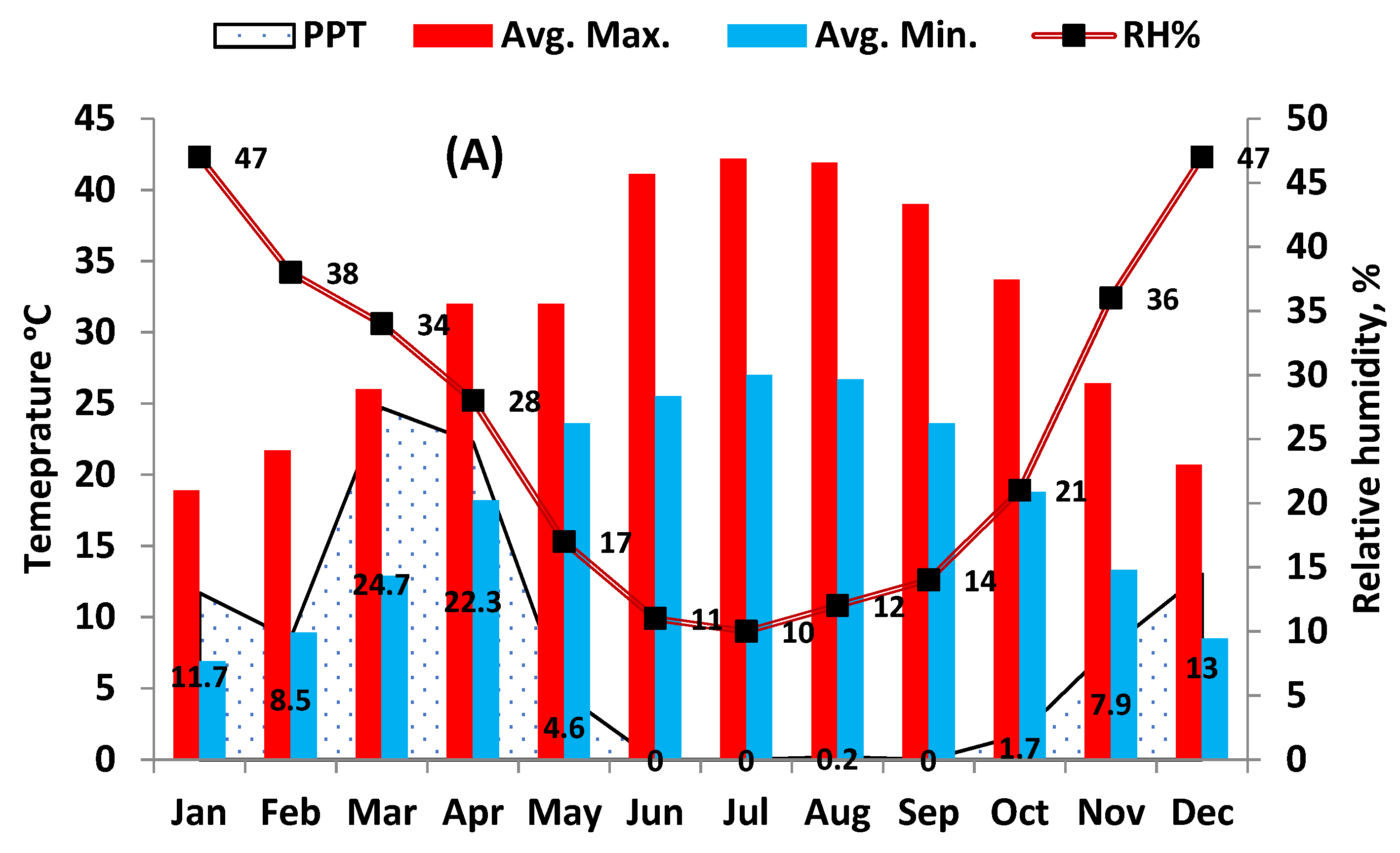
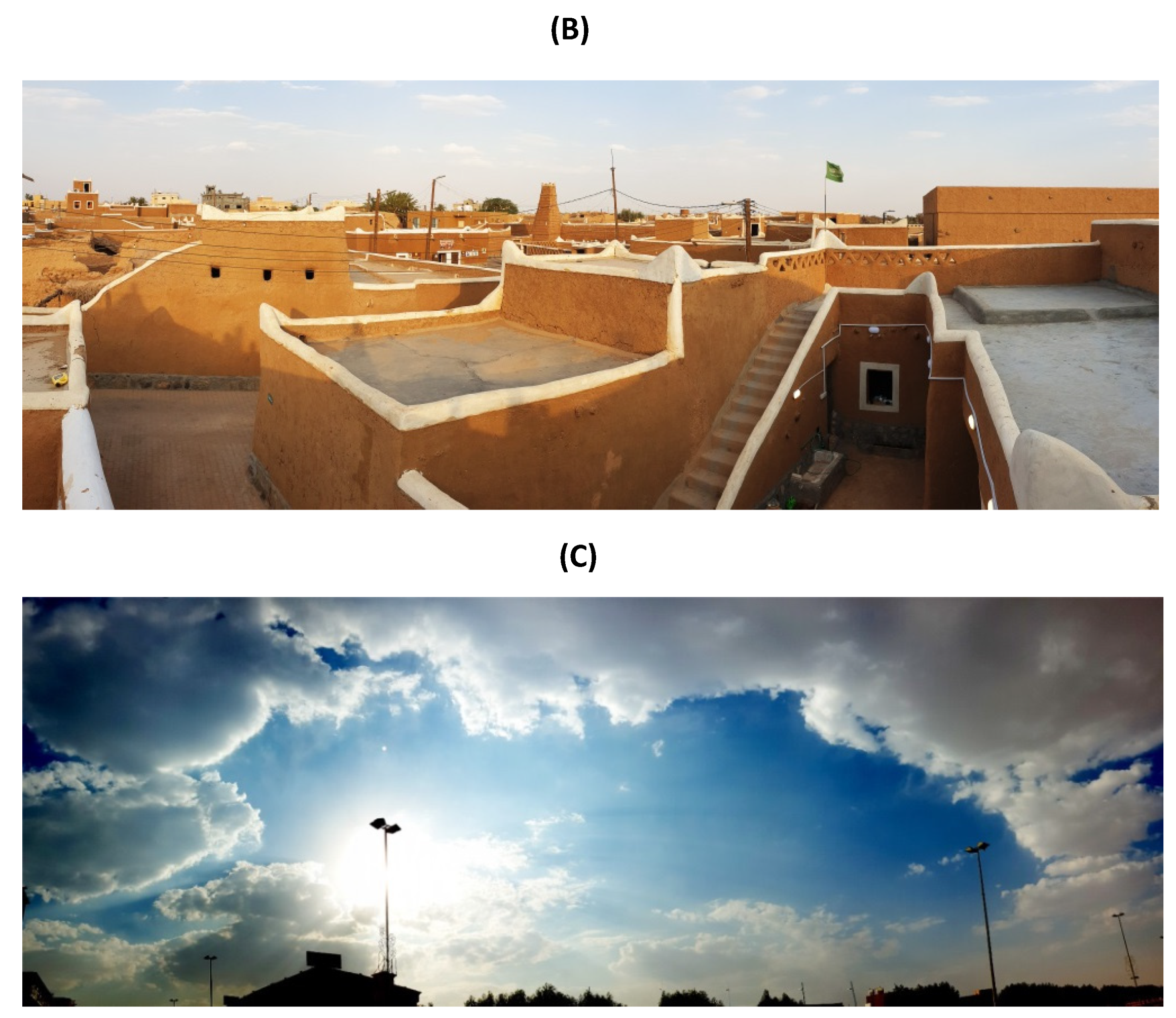
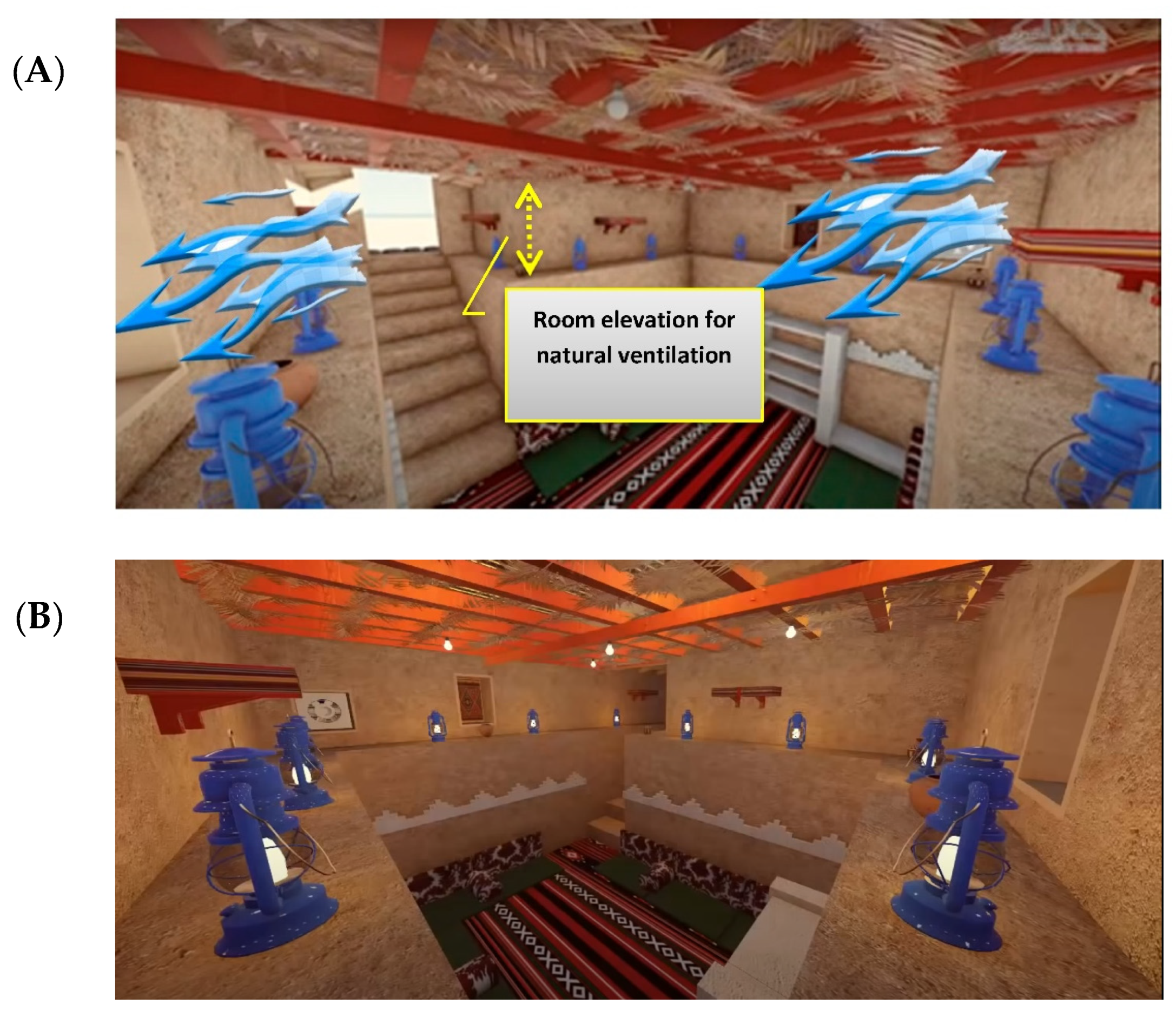
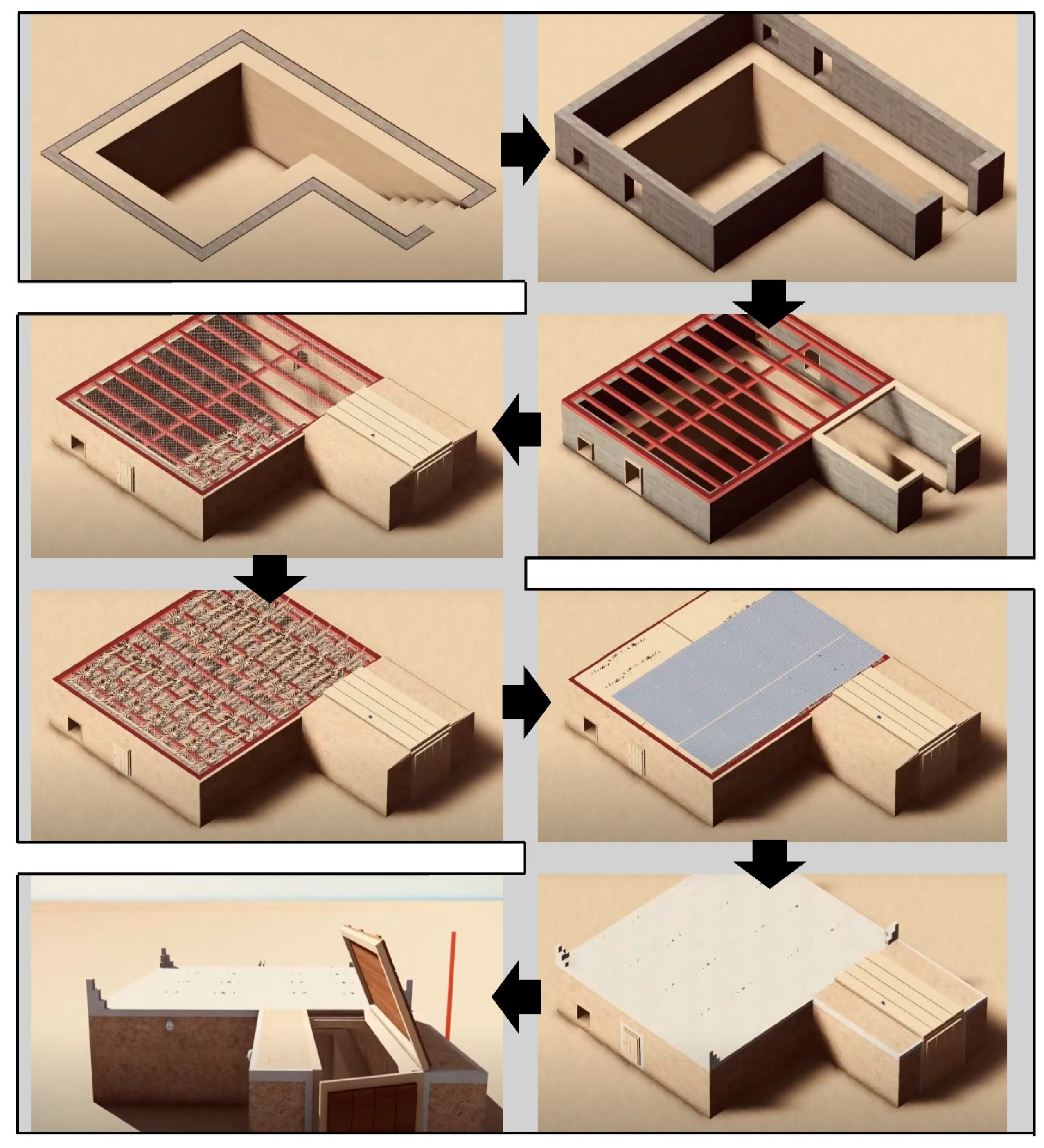
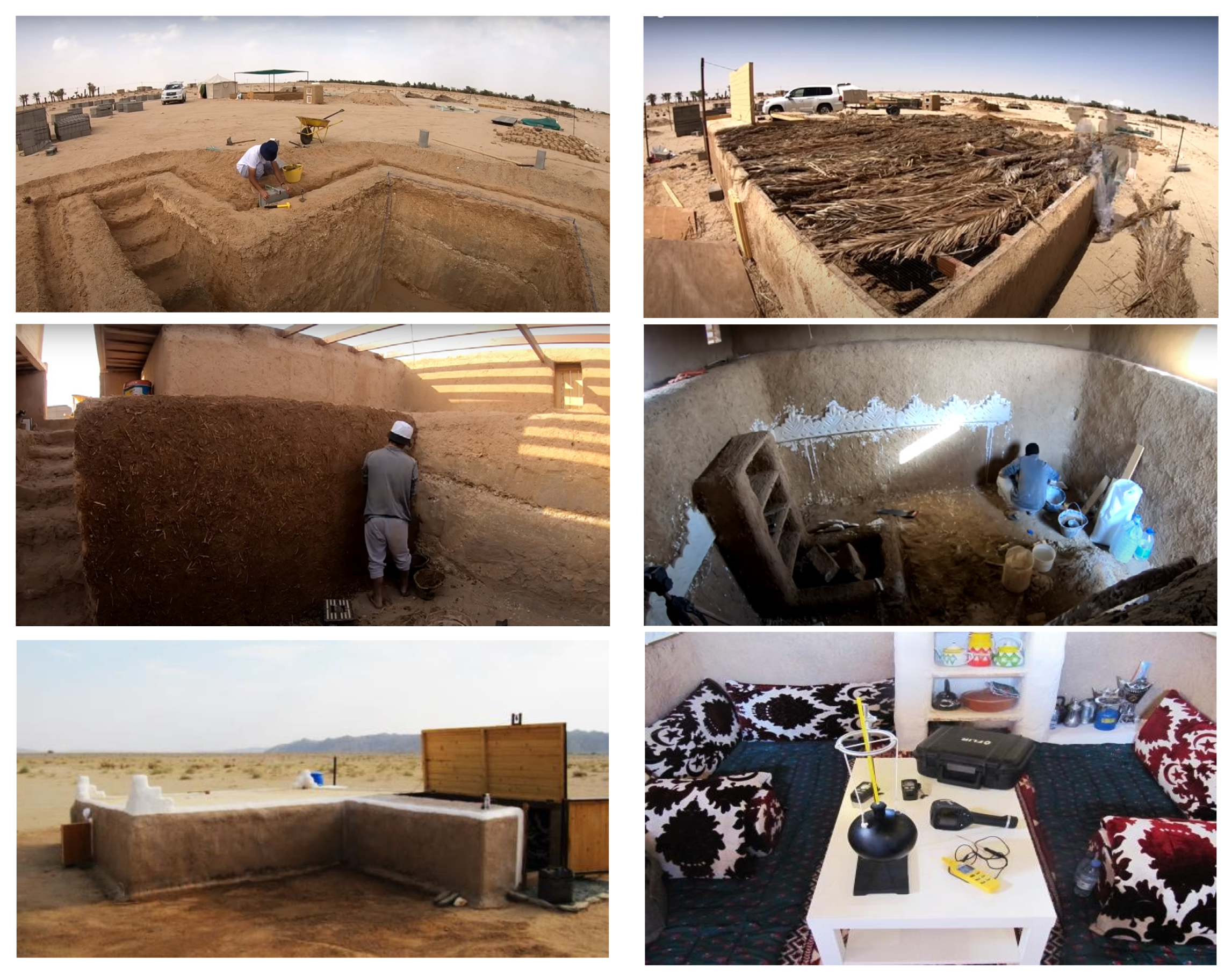
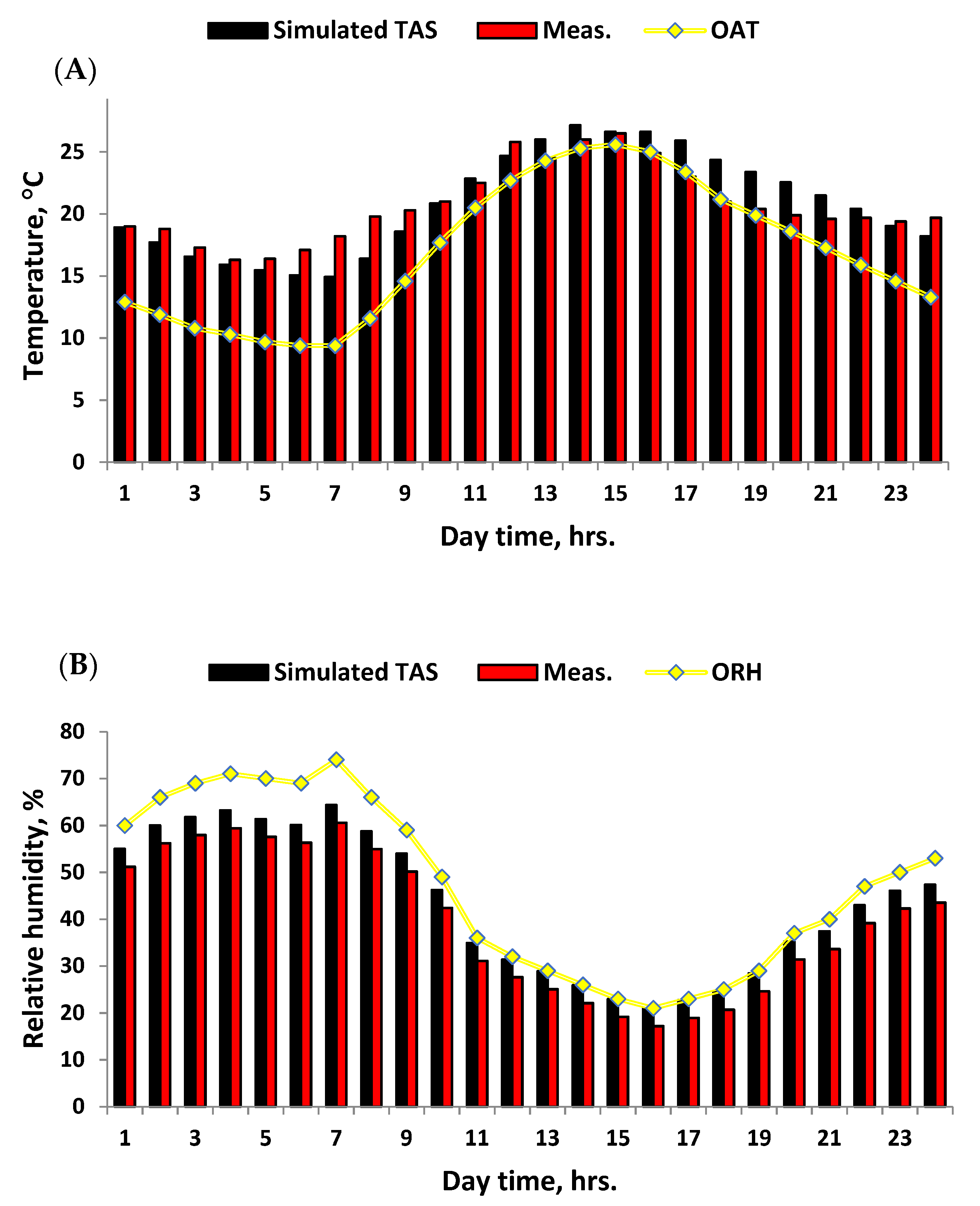
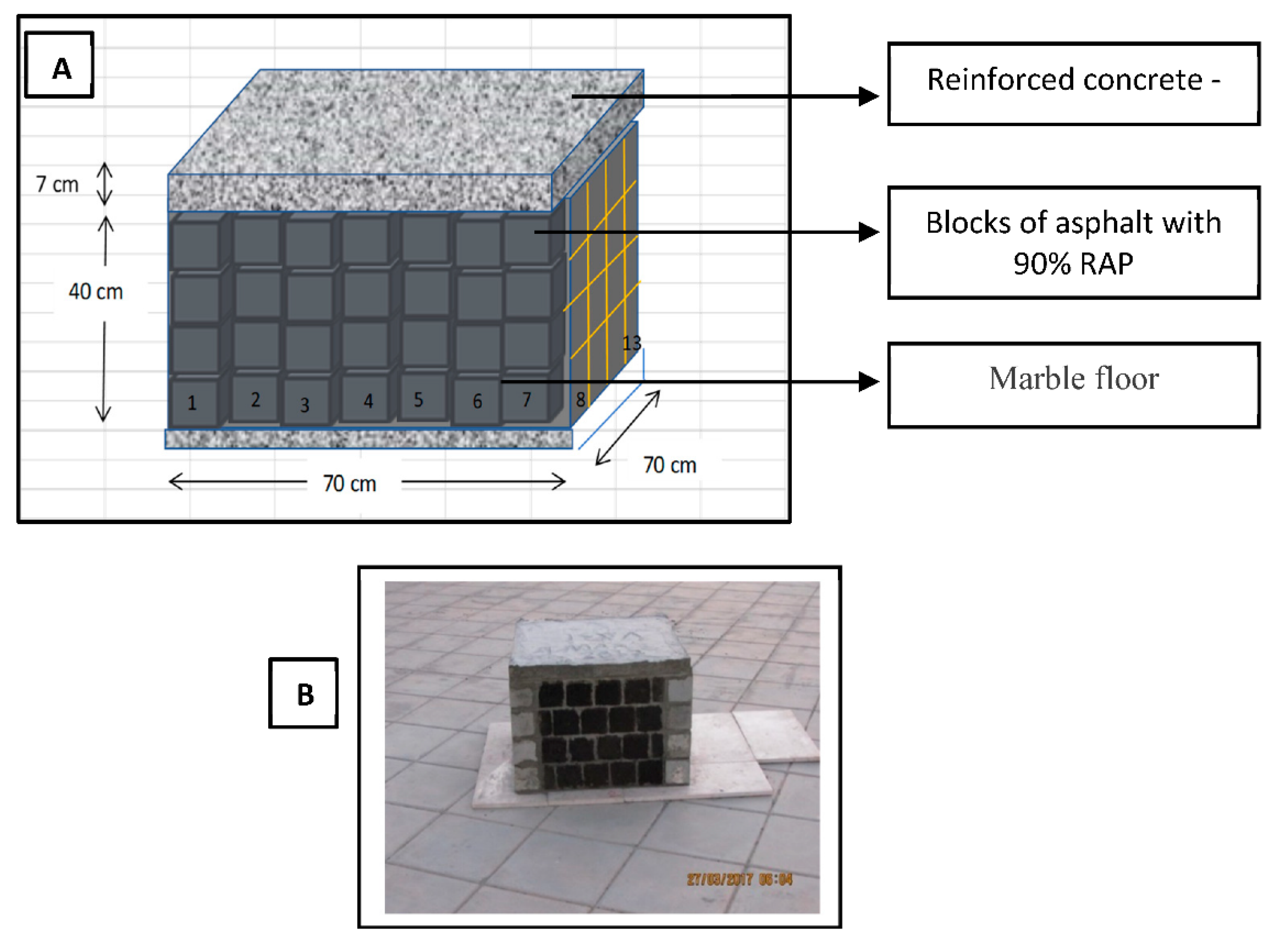
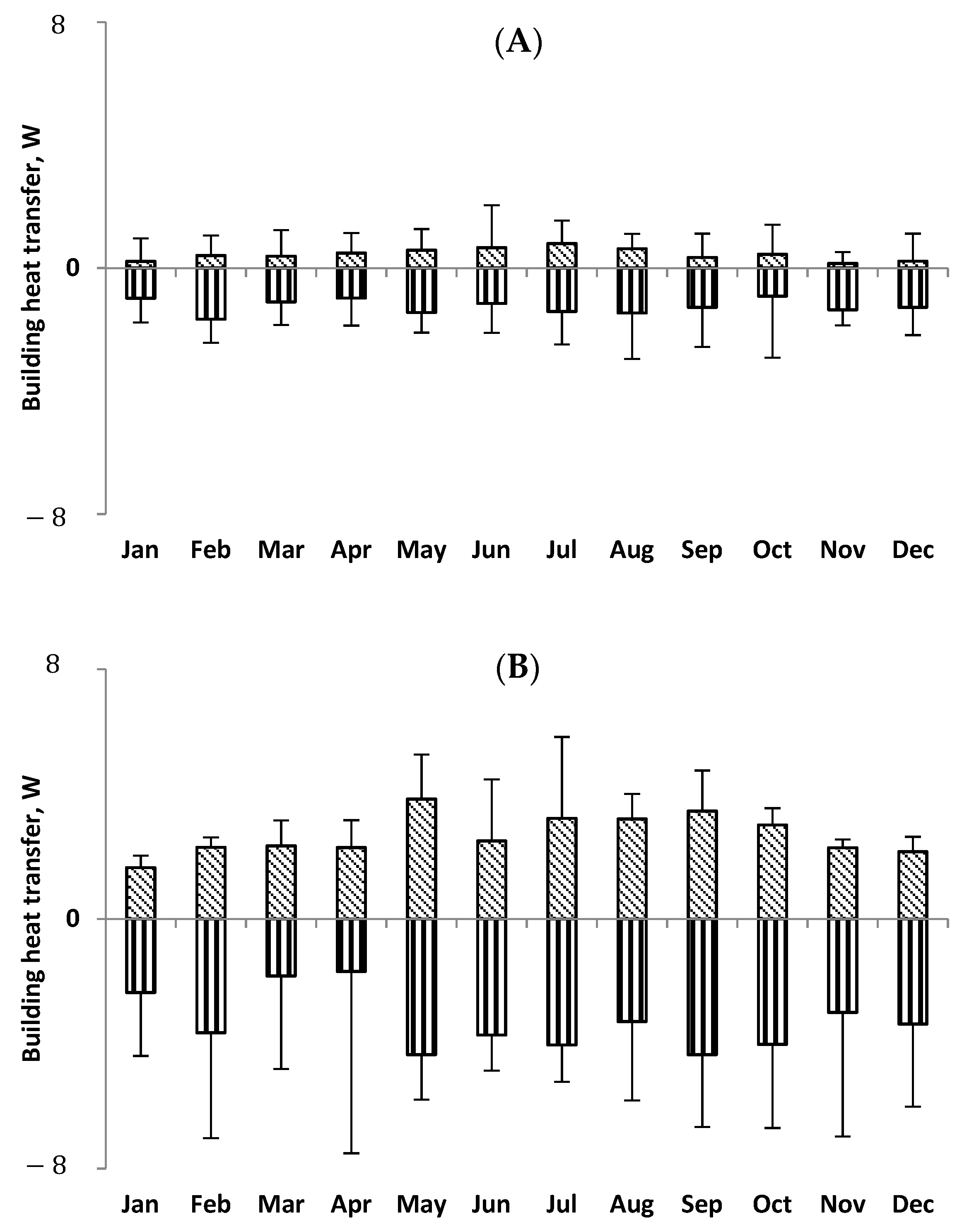
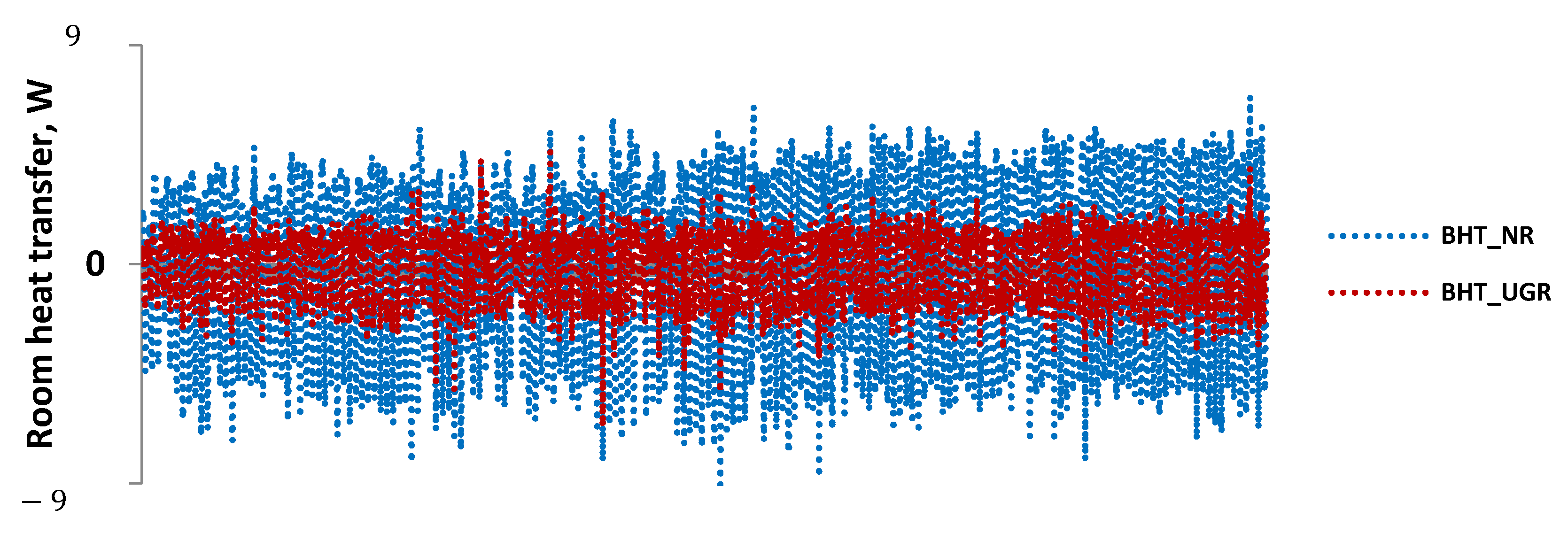
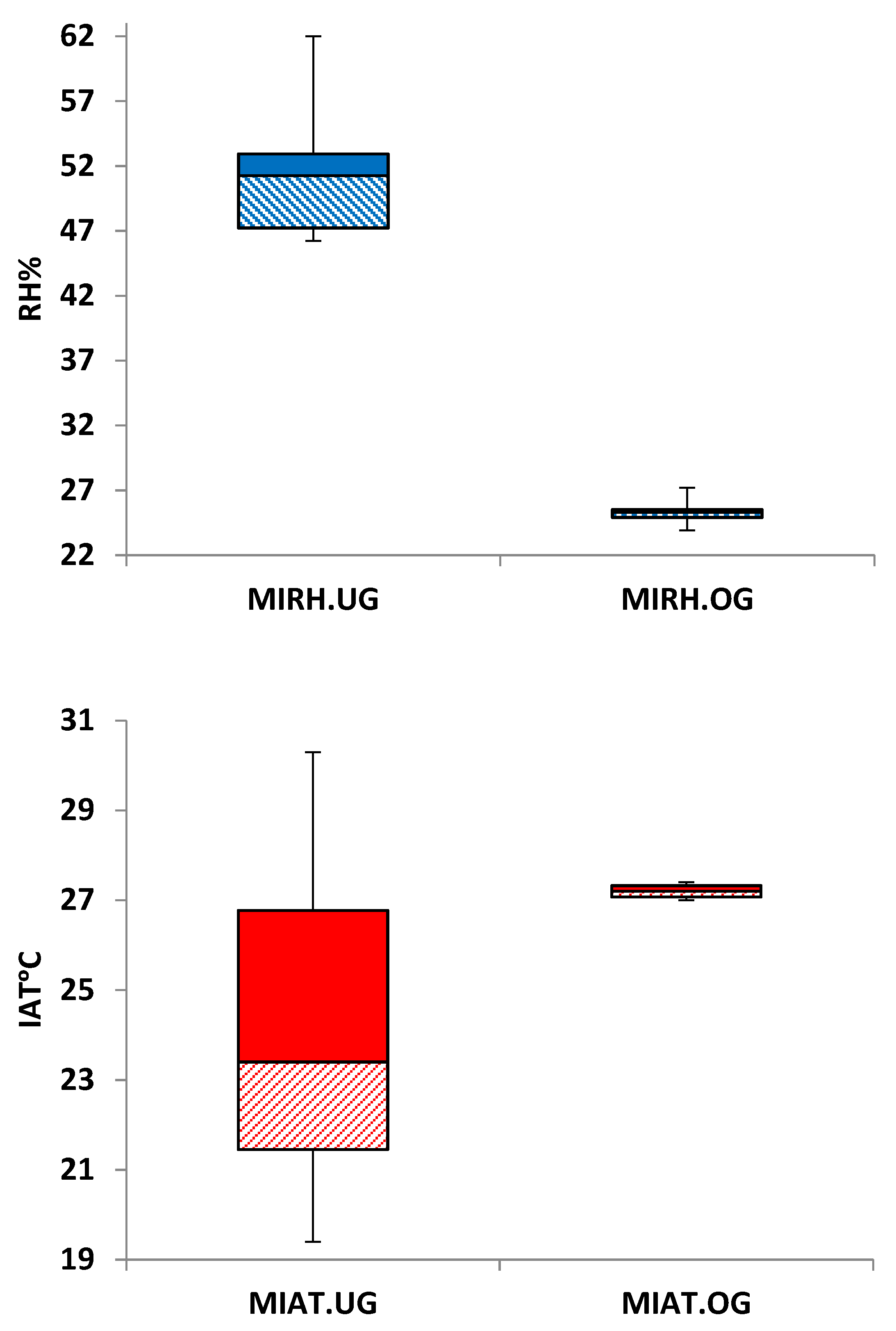
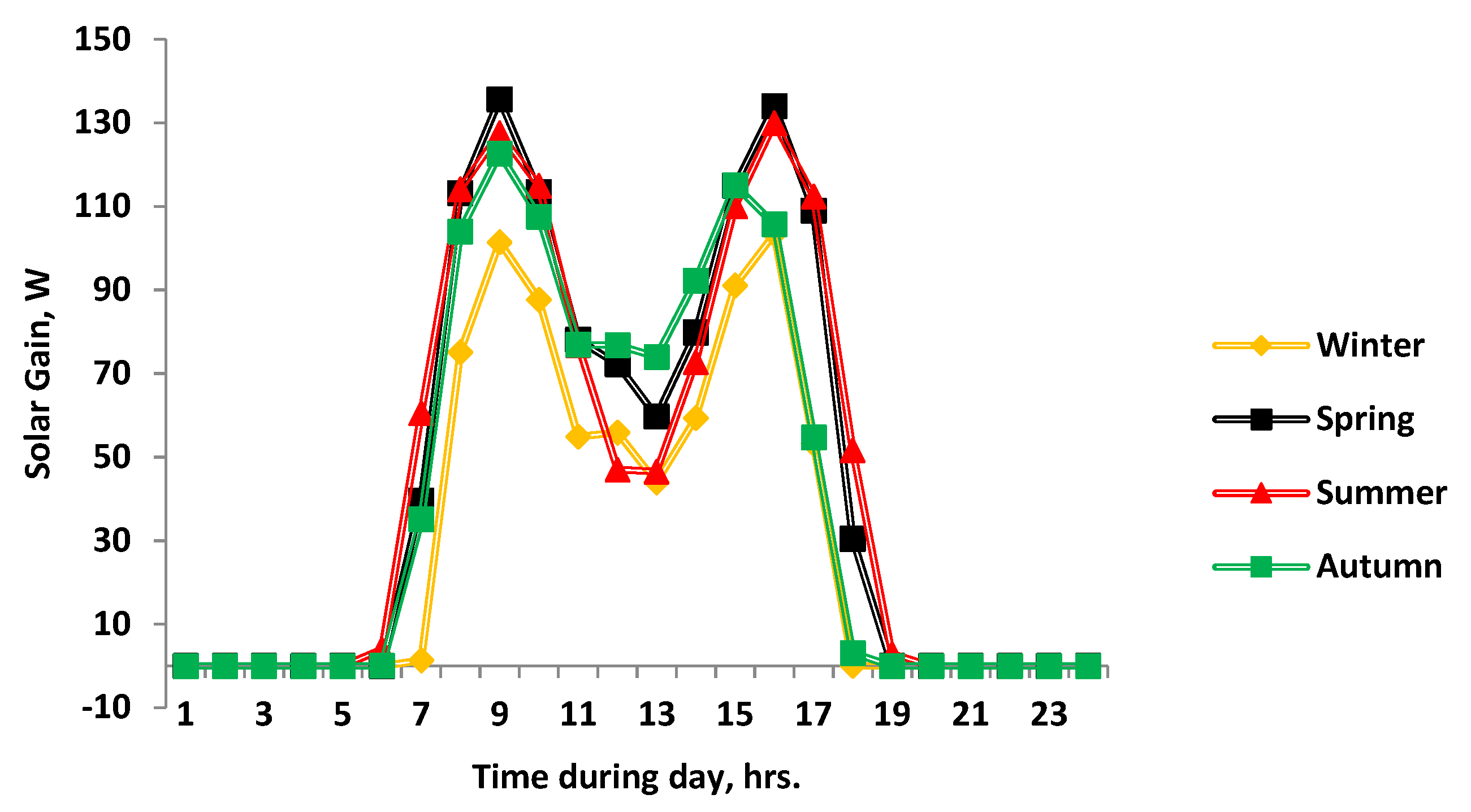
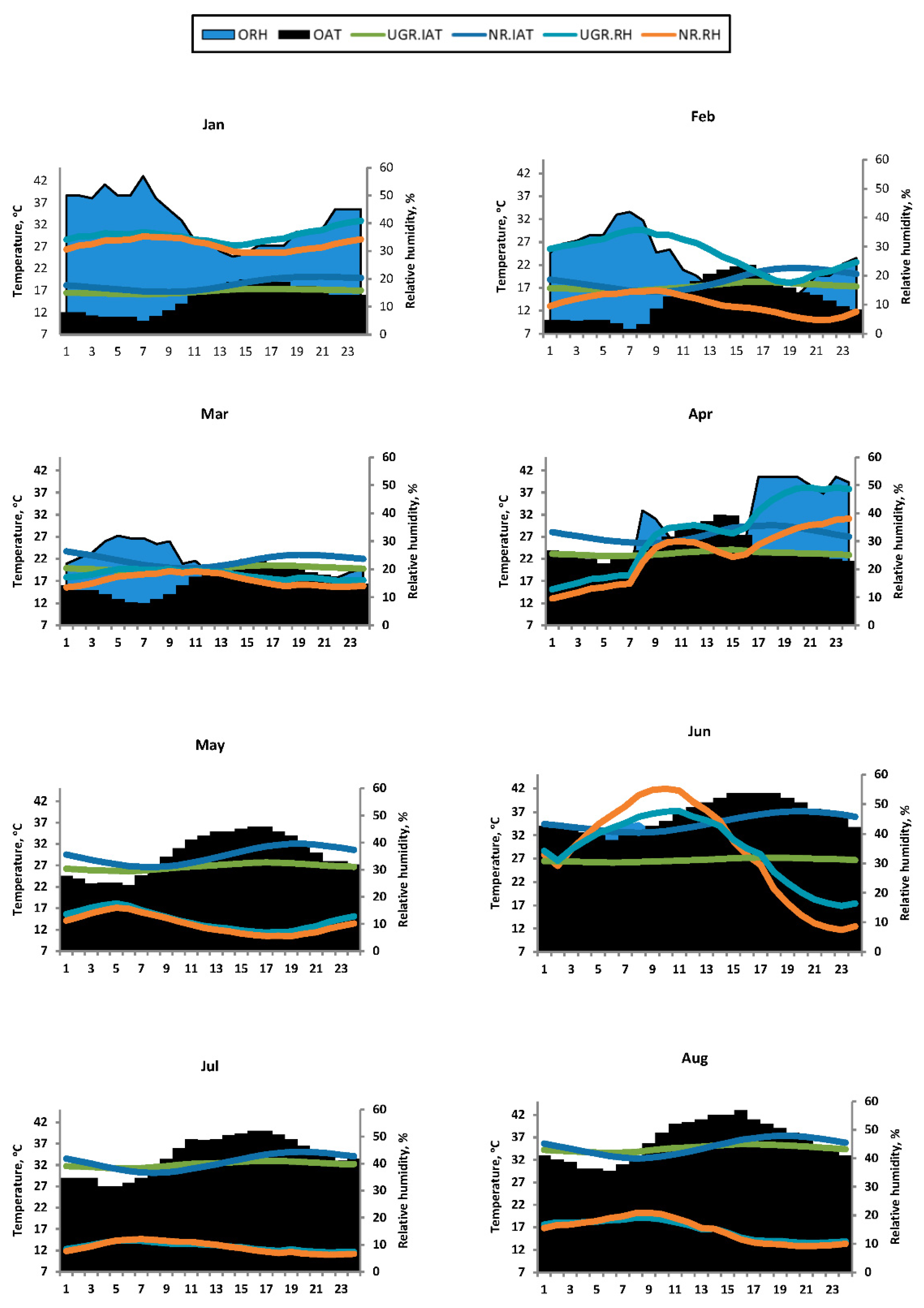
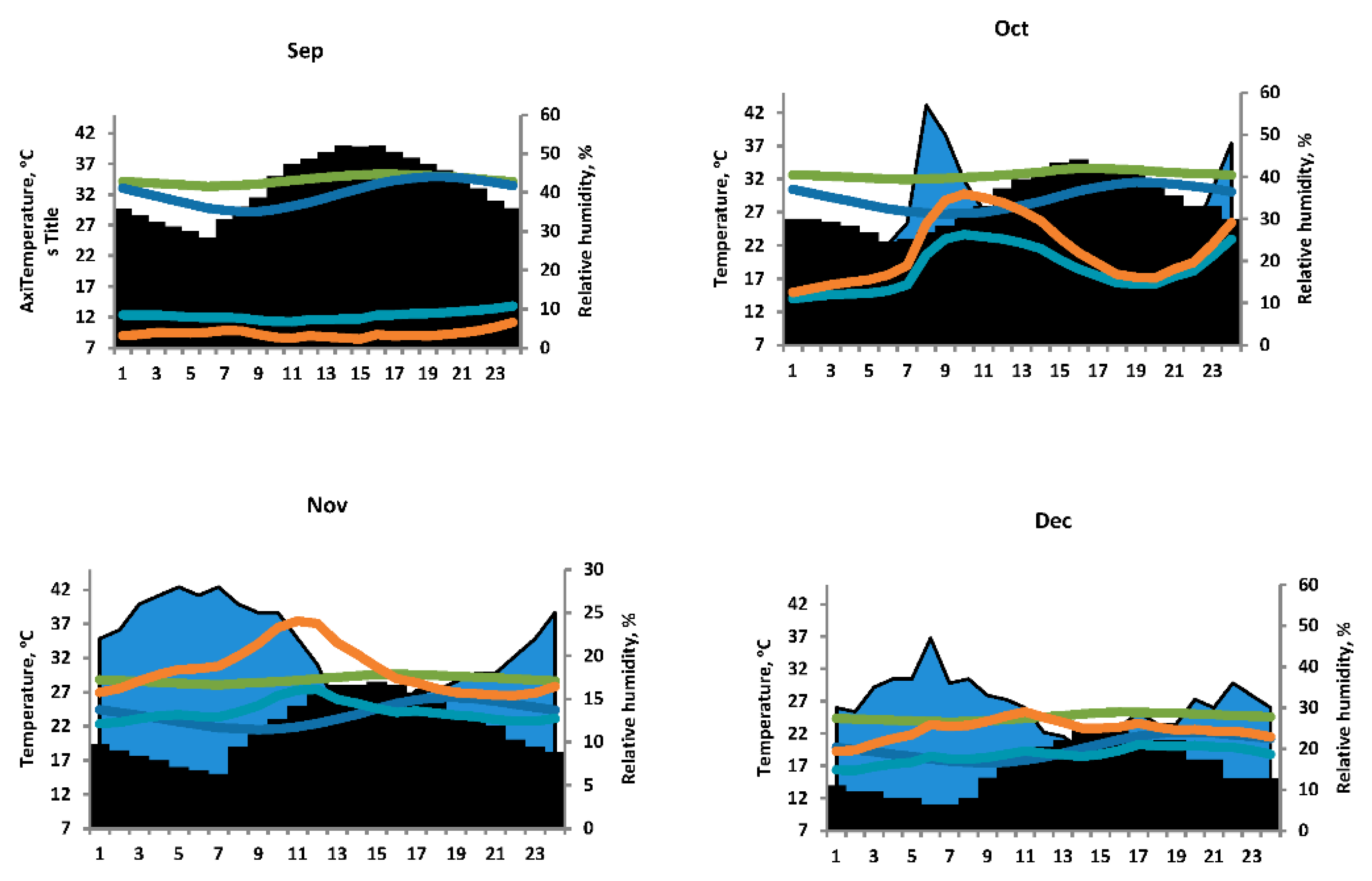
| Tool | Output | Accuracy/Sensitivity |
|---|---|---|
| Thermal imaging camera | Temperature range from −20 to 250 °C (−4 to 482 °F) | <0.15 °C |
| Professional High-Temperature Thermometer Laser Pointer | Temperature Tester Gun Measuring Range −50 to 550 °C | 0.5 to 1.0 |
| Temperature and humidity data logger |
| Temperature: ±1.0 °C Humidity: ±3.0% |
| TAS EDSL; Energy building performance tool | Many energy elements such as cooling load, solar and daylight | - |
| Thermal Imaging Camera | Normal Picture | |
|---|---|---|
| West | 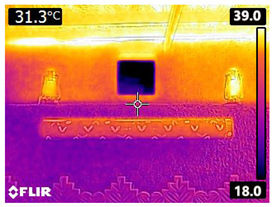 | 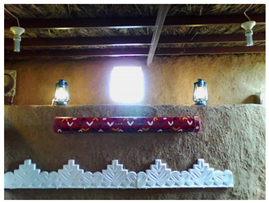 |
| North | 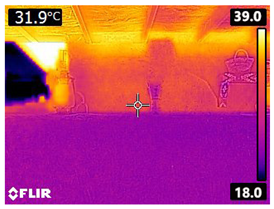 | 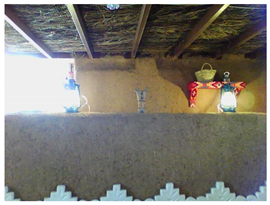 |
| East | 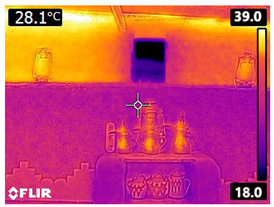 | 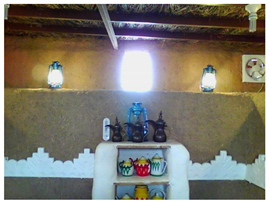 |
Publisher’s Note: MDPI stays neutral with regard to jurisdictional claims in published maps and institutional affiliations. |
© 2021 by the authors. Licensee MDPI, Basel, Switzerland. This article is an open access article distributed under the terms and conditions of the Creative Commons Attribution (CC BY) license (https://creativecommons.org/licenses/by/4.0/).
Share and Cite
Alwetaishi, M.; Benjeddou, O.; Balabel, A.; Alzaed, A. Can Underground Buildings Be Beneficial in Hot Regions? An Investigation of Field Measurements in On-Site Built Underground Construction. Buildings 2021, 11, 341. https://doi.org/10.3390/buildings11080341
Alwetaishi M, Benjeddou O, Balabel A, Alzaed A. Can Underground Buildings Be Beneficial in Hot Regions? An Investigation of Field Measurements in On-Site Built Underground Construction. Buildings. 2021; 11(8):341. https://doi.org/10.3390/buildings11080341
Chicago/Turabian StyleAlwetaishi, Mamdooh, Omrane Benjeddou, Ashraf Balabel, and Ali Alzaed. 2021. "Can Underground Buildings Be Beneficial in Hot Regions? An Investigation of Field Measurements in On-Site Built Underground Construction" Buildings 11, no. 8: 341. https://doi.org/10.3390/buildings11080341
APA StyleAlwetaishi, M., Benjeddou, O., Balabel, A., & Alzaed, A. (2021). Can Underground Buildings Be Beneficial in Hot Regions? An Investigation of Field Measurements in On-Site Built Underground Construction. Buildings, 11(8), 341. https://doi.org/10.3390/buildings11080341








